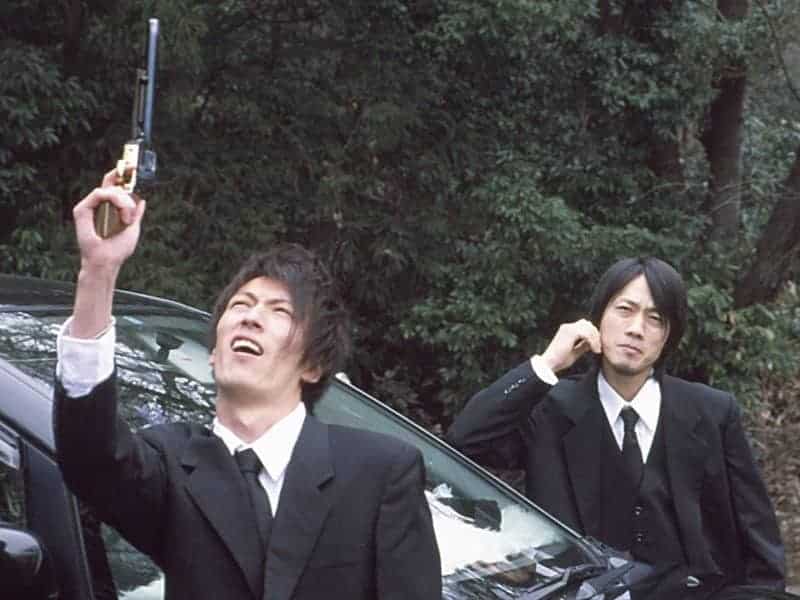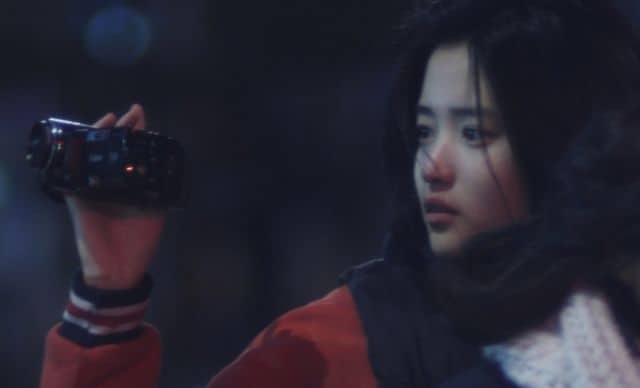Having spent most of their lives apart, brothers Kenichi and Takashi meet up at their father's funeral. Although the brothers left their family lives behind many years ago, the death stirs up suppressed emotions and forces them to reflect on their own shortcomings. When one of the brothers reaches out for an escort, he is surprised to learn that it is his sister who chose to stay behind when the brothers left. Meanwhile, the other brother befriends a waitress and offers to take her away from the small town, to live a more meaningful life in Tokyo. As the group begins to interact, each must decide how to move forward with their newly acknowledged emotional burdens.
Strawberries and the Gun is available from Pink Eiga
By Using the code AMPFriend, you get a 25% price-off on all products of the website including subscription
“Strawberries” stands out most notably in its visual representation. Director Rei Sakamoto is able to work well within a restricted budget, with the production having an aesthetic and tone that feels more in tune with films released during the “Golden Age” of the genre. That is not to say that the budget does not show, or that this could be mistaken for one of those productions, but his appreciation for the era really shines through in the visual presentation. The location work and the use of wider shots gives the film a feeling of being much bigger in scope.
The narrative within the production, although simple and time restricted, does manage to spark interest in the four characters that make up the story. This is done by treating them with a certain amount of sincerity as well as making sure there are no useless scenes used to push the eroticism over the plot. However, given that this production runs just under an hour and does contain a certain amount of erotic scenes, it does feel like it falls a bit short overall in character portrayal. Even handling the characters in such a competent and compelling manner is bound to fall short when there is not enough time to expound on the ideas and stories of each role.

Although the plot is strong, some of the cast does have some difficulties really connecting to the material, Notably with the two male leads being a bit generic. Thankfully, the exploitation genre often rests on the strength of the female characters and both Rin Nonomiya and Lemon Hanazawa give memorable performances in their roles. I was particularly impressed with Rin Nonomiya, who despite not having much experience as an actor, was able to convey a certain innocent charm through her role as the misguided waitress. Overall, no one really drags down the production with a sub-par performance.
The erotic scenes are tasteful, compared to the majority of the modern day offerings in the genre, but lack any visual flair that make them stand out. However, the lack of defining erotic scenes is not necessarily a deterrent, as the straightforward and simple approach does well to compliment the tone of the production. With many productions focusing on sexual relationships appealing to certain fetishes/fantasies, the films more subtle approach is a nice break from the bulk of erotic content one expects within the “Pink” genre. However, for those who seek out the visually striking erotic scenes as the main catalyst for enjoyment of the genre, “Strawberries” does come up a bit short on hitting those strong visual moments.

Director Rei Sakamoto's filmography, which is rather limited within the genre of the more modest budgeted Japanese exploitation films, reflects that of a rather underutilized talent. With this being my second viewing of his work, (my first being “Suicide Chain“) his talent to weave an engaging drama into the exploitation matches that of other names more prolific in the genre. Viewing Sakamoto's work really feels like a throwback to Pink Film of a few generations back, and as a long time fan of the genre, that feeling is harder to come by than one may think. When a film hits those notes and acts as reminders of why Japanese exploitation cinema became my favorite genre within film, it comes with a deep amount of appreciation. The film's greatest shortcoming, which keeps it from becoming an exemplary entry in the genre, comes down to its limited run time in dealing with four intriguing characters. Overall, Rei Sakamoto's work contains a lot of aspects that will appeal to fans of both classic and contemporary “Pink” film.















